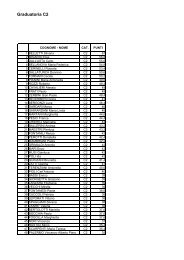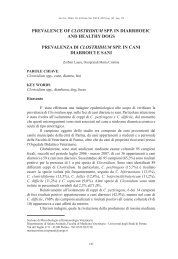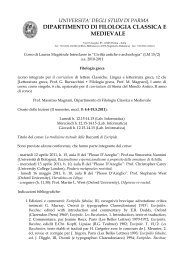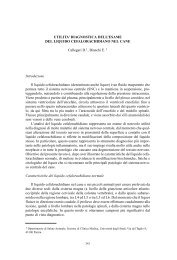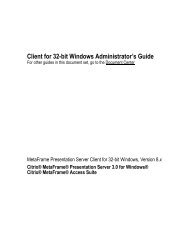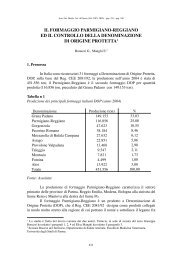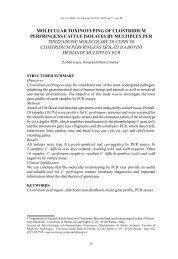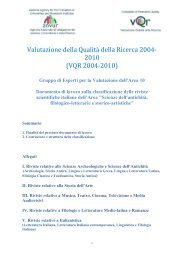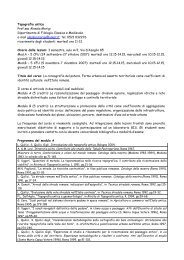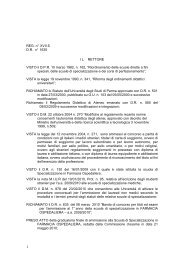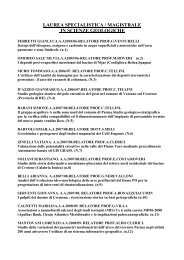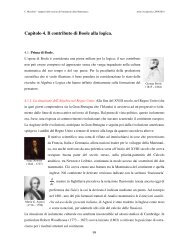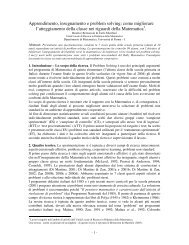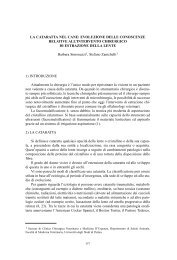porcine reproductive and respiratory syndrome
porcine reproductive and respiratory syndrome
porcine reproductive and respiratory syndrome
You also want an ePaper? Increase the reach of your titles
YUMPU automatically turns print PDFs into web optimized ePapers that Google loves.
4 th International Symposium on Emerging <strong>and</strong> Re-emerging Pig Diseases – Rome June 29 th – July 2 nd , 2003<br />
real world experiences where the use of vaccine may appear<br />
to have no benefit in preventing a PRRSV strain from causing<br />
severe losses; <strong>and</strong> 3) the significance of preventing the<br />
introduction of PRRSV into the herd.<br />
In general, biosecurity protocols can be good at keeping out<br />
infected swine. This risk of importing PRRSV with<br />
replacement animals can be at about zero when the only<br />
introduction of genetic material is semen. The risk of semen<br />
is dependent on how the boar stud operates. Boar studs, like<br />
sow herds, can follow extensive biosecurity protocols, yet it is<br />
still possible for them to become infected with PRRSV.<br />
These PRRSV infections are attributed to an indirect area<br />
spread of virus. The exact route of this virus transmission is<br />
not understood <strong>and</strong> could be one of several as previously<br />
described. This indirect area spread of virus is a vexing<br />
problem because it is difficult to control the unknown.<br />
Moreover, it is difficult to assess the risk/benefit ratio of the<br />
economic investments required to control potential avian,<br />
insect, <strong>and</strong> mammalian vectors. These unknowns also make<br />
it difficult to determine the risk/benefit of depopulating <strong>and</strong><br />
repopulating a swine herd with PRRS-negative stock,<br />
perhaps the easiest way to gain a PRRS-negative status.<br />
Depopulating <strong>and</strong> repopulating a swine herd with PRRSnegative<br />
stock is an expensive, but relatively quick option to<br />
gain a PRRS-negative status. A less expensive, but longer<br />
option is to follow test <strong>and</strong> removal strategies designed to<br />
convert a PRRS-positive stable herd into a PRRS-negative<br />
status (17). These test <strong>and</strong> removal strategies focus on<br />
removing PRRSV-positive animals using several diagnostic<br />
methods to find the positive animals. Serology may be the<br />
most efficient tool since there is a high probability that the<br />
only animals harboring PRRSV in a PRRS-stable herd would<br />
be the seropositive animals. Perhaps the biggest<br />
consideration in converting a PRRS-positive herd into a<br />
PRRS-negative status is how to keep PRRSV out of the<br />
herd. After all, the virus got into the herd somehow, <strong>and</strong> if<br />
that route of virus transmission is not stopped, then one<br />
would expect the herd to become infected again.<br />
FUTURE<br />
Although there are many strategies to control <strong>and</strong> prevent<br />
PRRS, it is clear that none of them by itself or in combination<br />
seem to be the total answer to the PRRS problem. No matter<br />
how good the present biosecurity protocol may be for a herd,<br />
there is always the concern that a PRRS epidemic is just<br />
around the corner. If the PRRS problem is going to be solved,<br />
then something new will have to happen.<br />
At present, there are two "something new" pathways; one<br />
involves the eradication of PRRS, <strong>and</strong> the second involves<br />
the administration of some agent to swine that would be a<br />
significant improvement over current vaccines. Elimination of<br />
PRRSV from a farm can be achieved, but it will be difficult to<br />
implement regional <strong>and</strong> national PRRS eradication efforts<br />
without a better underst<strong>and</strong>ing of how to prevent indirect<br />
transmission of PRRSV, an apparent r<strong>and</strong>om event.<br />
Moreover, for the foreseeable future, the concentration of the<br />
swine industry may plague any eradication efforts. There are<br />
a number of research initiatives around the world<br />
investigating the second path. Scientists at these<br />
laboratories are applying cutting-edge technology towards<br />
developing better PRRSV vaccines. The direction of these<br />
research programs falls into two broad areas, adjuvants<br />
(cytokines [21,61] <strong>and</strong> immunoactive peptides [41]), <strong>and</strong><br />
vaccines (DNA [47], PRRSV-deletion mutant [60], <strong>and</strong> viral<strong>and</strong><br />
bacterial-vectored PRRSV genes [3,4]).<br />
34<br />
For "something new" to happen, the research community will<br />
need to be very clever in applying current technology with<br />
limited resources to gain the most information possible.<br />
Perhaps this meeting will provide a good forum on directing<br />
future PRRS research.<br />
References<br />
1. Albina E., Madec R., Cariolet J., Torrison J. (1994) Immune<br />
response <strong>and</strong> persistence of the <strong>porcine</strong> <strong>reproductive</strong> <strong>and</strong><br />
<strong>respiratory</strong> <strong>syndrome</strong> virus in infected pigs <strong>and</strong> farm units. Vet<br />
Rec. 134: 567-573.<br />
2. Allende R., Laegreid W., Kutish G., Galeota J., Wills R., Osorio F.<br />
(2000) Porcine <strong>reproductive</strong> <strong>and</strong> <strong>respiratory</strong> <strong>syndrome</strong> virus:<br />
Description of persistence in individual pigs upon experimental<br />
infection. J Virol. 74: 10834-10837.<br />
3. Alonso S., Sola I., Teifke J.P., Reimann I., Izeta A., Balasch M.,<br />
Plana-Duran J., Moormann R.J.M., Enjuanes L. (2002) In vitro<br />
<strong>and</strong> in vivo expression of foreign genes by transmissible<br />
gastroenteritis coronavirus-derived minigenomes. J Gen Virol. 83:<br />
567-579.<br />
4. Bastos R.G., Dellagostin O.A., Barletta R.G., Doster A.R., Nelson<br />
E. Osorio F.A. (2002) Construction <strong>and</strong> immunogenicity of<br />
recombinant Mycobacterium bovis BCG expressing GP5 <strong>and</strong> M<br />
protein of <strong>porcine</strong> <strong>reproductive</strong> <strong>and</strong> <strong>respiratory</strong> <strong>syndrome</strong> virus.<br />
Vaccine 21: 21-29.<br />
5. Batista L, Dee SA, Rossow KD, Deen J, Pijoan C. (2002)<br />
Assessing the duration of persistence <strong>and</strong> shedding of <strong>porcine</strong><br />
<strong>reproductive</strong> <strong>and</strong> <strong>respiratory</strong> <strong>syndrome</strong> virus in a large population<br />
of breeding-age gilts. Can J Vet Res. 66: 196-200.<br />
6. Batista L., Pijoan C., Torremorell M. (2002) Experimental<br />
injection of gilts with <strong>porcine</strong> <strong>reproductive</strong> <strong>and</strong> <strong>respiratory</strong><br />
<strong>syndrome</strong> virus (PRRSV) during acclimatization. J Swine Health<br />
Prod. 10: 147-150.<br />
7. Benson, JE, Yaeger MJ, Lager KM. (2000) Effect of <strong>porcine</strong><br />
<strong>reproductive</strong> <strong>and</strong> <strong>respiratory</strong> <strong>syndrome</strong> virus (PRRSV) exposure<br />
on fetal infection in vaccinated <strong>and</strong> nonvaccinated swine. Swine<br />
Health Prod. 8: 155-160.<br />
8. Benfield D., Christopher-Hennings J., Nelson E., Rowl<strong>and</strong> R.,<br />
Nelson J., Chase C., Rossow K. (1997) Persistent fetal infection<br />
of <strong>porcine</strong> <strong>reproductive</strong> <strong>and</strong> <strong>respiratory</strong> <strong>syndrome</strong> (PRRS) virus.<br />
Proc Am Assoc Swine Practit, Quebec City Quebec, Canada.<br />
p455-458.<br />
9. Botner A, Str<strong>and</strong>bygaard B, Sorensen KJ, Have P, Madsen KG,<br />
Madsen ES, Alex<strong>and</strong>ersen S. (1997) Appearance of acute<br />
PRRS-like symptoms in sow herds after vaccination with a<br />
modified live PRRS vaccine. Vet Rec. 141: 497-499.<br />
10. Botner A., Nielsen J., Oleksiewicz M., Storgaard T. (1999)<br />
Heterologous challenge with <strong>porcine</strong> <strong>reproductive</strong> <strong>and</strong> <strong>respiratory</strong><br />
<strong>syndrome</strong> (PRRS) vaccine virus: no evidence of reactivation of<br />
previous European-type PRRS virus infection. Vet Micro. 68:<br />
1887-195.<br />
11. Brockmeier S., Lager K. (2002) Experimental airborne<br />
transmission of <strong>porcine</strong> <strong>reproductive</strong> <strong>and</strong> <strong>respiratory</strong> <strong>syndrome</strong><br />
virus <strong>and</strong> Bordetella bronchiseptica. Vet Microbiol. 89: 267-275.<br />
12. Cai X-H., Guo B-Q., Liu W-X., Chai W-J., Yin X-N., Wang H-F.,<br />
Liu Y-G. (2002) Immune protection of an inactivated vaccine<br />
against <strong>porcine</strong> <strong>reproductive</strong> <strong>and</strong> <strong>respiratory</strong> <strong>syndrome</strong>. Proc Int<br />
Pig Vet Soc. Vol2,p2.<br />
13. Cavanagh D. (1997) Nidovirales: a new order compromising<br />
Coronaviridae <strong>and</strong> Arteriviridae. Arch Virol 142: 629-633.<br />
14. Christianson WT, Collins JE, Benfield DA, Harris L, Gorcyca DE,<br />
Chladek DW, Morrison RB, Joo HJ. (1992) Experimental<br />
reproduction of swine infertility <strong>and</strong> <strong>respiratory</strong> <strong>syndrome</strong> in<br />
pregnant sows. Am J Vet Res. 53: 485-488.<br />
15. Christopher-Hennings J., Nelson E., Benfield D. (1996) Detecting<br />
PRRSV in boar semen. Swine Health Prod. 4: 37-39.<br />
16. Christopher-Hennings J., Nelson E., Nelson J., Benfield D. (1997)<br />
Effects of a modified-live virus vaccine against <strong>porcine</strong><br />
<strong>reproductive</strong> <strong>and</strong> <strong>respiratory</strong> <strong>syndrome</strong> in boars. Am J Vet Res.<br />
58: 40-45.<br />
17. Dee S., Bierk M., Deen J., Molitor T. (2001) An evaluation of test<br />
<strong>and</strong> removal for the elimination of <strong>porcine</strong> <strong>reproductive</strong> <strong>and</strong><br />
<strong>respiratory</strong> <strong>syndrome</strong> virus from 5 swine farms. Can J Vet Res.<br />
65: 22-27.<br />
18. Dee S., Deen J., Rossow K., Wiese C., Otake S., Joo H.S.,<br />
Pijoan C. (2002) Mechanical transmission of <strong>porcine</strong> <strong>reproductive</strong><br />
<strong>and</strong> <strong>respiratory</strong> <strong>syndrome</strong> virus throughout a coordinated



